Greeting Message
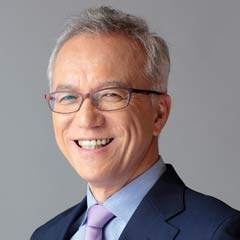
-
The 29th Annual Meeting of the Japan Otological Society
President
Seiji Kakehata, M.D., Ph.D.
In 2019 we will be hosting a conference of the Japanese Otological Society in Yamagata. As the largest member of the Japanese Otolaryngology Society, it is a great honor to be hosting the conference in Yamagata for the first time. The theme for the meeting is ‘From Individual Conception to World Standard’.
Overriding objective of the conference is for it to be used it as a platform to spread the allure of Otology. Ear surgery is often seen as more difficult, and requiring a much longer waiting period before young doctors can perform surgeries themselves. However, as we know, there are many new frontiers in Otology, and these updated methods are very interesting. By inviting surgeons and researchers on the cutting edge of these technological developments from all around the world, we wish to spread the message that Otology is an important, exciting and accessible field, and inspire a new generation of surgeons and researchers to join us.
The number of young doctors from Japan who take time to study abroad is waning, and by bringing the world’s best to Yamagata, I want to show them what an exciting world exists in Otology. To this end, doctors from all countries are most welcomed to attend the conference and take part in this global exchange of ideas and connection.
To ensure that the conference is a valuable experience for all attendees, the following format has been decided upon.
Theme Sessions: These twelve, 90-minute sessions will focus on the most cutting edge topics in Otology, both international and domestic. Keynote addresses by the world’s leading surgeons and researchers will be followed by rarely held in Japan, round-table discussions on the presented topics. This format will afford all participants the opportunity to participate in, and contribute to, in-depth discussions on the most relevant topics in Otology.
Next Generation Sessions: These 60-minute sessions are provided for doctors under 50 to deliver their personal message on Otology to the audience. The topics of these sessions are open to the presenters to decide, and I greatly look forward to hearing what will be discussed.
Young Award session (New generation’s session): During this 90-minute session we will select a winning presentation from amongst six pre-selected young doctors (under 40). It will give us an exciting glimpse into the bright future of Otology.
First Timers’ Session: This session is the stage for first-time presenters at an Otological Society conference. It doesn’t matter whether you’re a doctor, resident, or student, I look forward to hearing your fresh opinions, ideas and observations.
I look forward to welcoming doctors from Japan and all over the world to this great opportunity for expanding and strengthening our global Otology community.

Seiji Kakehata, M.D., Ph.D.
President
The 29th Annual Meeting of the Japan Otological Society
International Faculty
| Name | Affiliation | Country |
|---|---|---|
Nirmal Patel |
Macquarie University Hospital |
Australia |
Adrian James |
University of Toronto, Hospital for Sick Children |
Canada |
Blake C. Papsin |
University of Toronto, Hospital for Sick Children |
Canada |
Yong Cui |
Guangdong Provincial People’s Hospital |
China |
Sune Land Bloch |
Copenhagen University Hospital |
Denmark |
Søren Hansen |
Copenhagen University Hospital |
Denmark |
Kristianna Mey |
Copenhagen University Hospital |
Denmark |
Martin Nue Møller |
Copenhagen University Hospital |
Denmark |
Per Caye-Thomasen |
Copenhagen University Hospital |
Denmark |
Mohamed Badr-El-Dine |
University of Alexandria Faculty of Medicine |
Egypt |
Matthew Yung |
Ipswich Hospital |
England |
Robert Vincent |
The Jean Causse Ear Clinic |
France |
Joachim Müller |
University of Munich |
Germany |
Michael Tong |
The Chinese University of Hong Kong |
Hong Kong |
Daniele Marchioni |
University Hospital of Verona |
Italy |
Livio Presutti |
University Hospital of Modena |
Italy |
Sung-Won Chae |
Korea University School of Medicine, Guro Hospital |
Korea |
Yang Sun Cho |
Sungkyunkwan University School of Medicine |
Korea |
Jae Ho Chung |
Hanyang University |
Korea |
Jong Woo Chung |
Asan Medical Center, University of Ulsan College of Medicine |
Korea |
Dong-Kee Kim |
Catholic University of Korea |
Korea |
In Seok Moon |
Yonsei University |
Korea |
Alexander Huber |
University Hospital Zurich |
Switzerland |
Rudolf Probst |
University Hospital Zurich |
Switzerland |
Stephen P. Cass |
University of Colorado |
USA |
Brandon Isaacson |
UT Southwestern Medical Center |
USA |
Akira Ishiyama |
University of California, Los Angeles |
USA |
Judith Kempfle |
Harvard Medical School |
USA |
Daniel J. Lee |
Harvard Medical School |
USA |
Tomoko Makishima |
University of Texas Medical Branch |
USA |
Alejandro Rivas |
Vandebuilt University |
USA |
Joseph Santos-Sacchi |
Yale University School of Medicine |
USA |
George B. Wanna |
New York Eye and Ear and Beth Israel of Mount Sinai |
USA |
Theme Session
Thema Session 1
INNOVATIONS IN OTOLOGY
TEES: Paradigm shift in ear surgery
Moderator: Mohamed Badr-El-Dine(Faculty of Medicine, Alexandria University, Egypt)
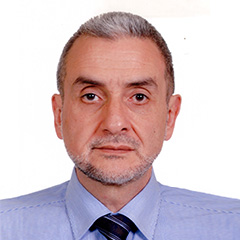
Chair: Seiji Kakehata(Yamagata University, Japan)
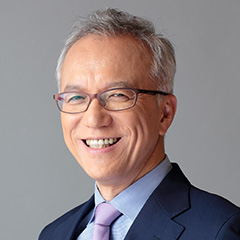
Keynote/ Symposium participant: Livio Presutti(University Hospital of Modena, Italy)
The role of endoscopy in otologic surgery: from history to new perspectives of an innovative technique
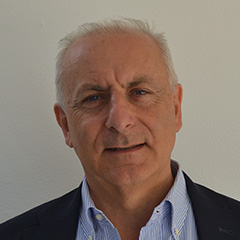
Symposium participant: Daniele Marchioni(University of Verona, Italy)
The use of different angled-endoscopes in lateral skull base pathologies
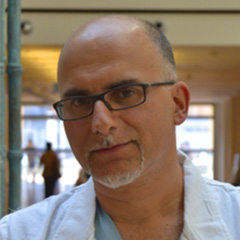
Symposium participant: Yong Cui(Guangdong Provincial People’s Hospital, China)
What should we do to face challenges of paradigm shift in ear surgery?
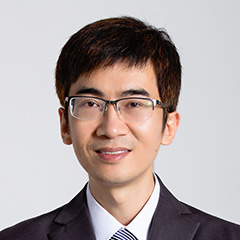
Symposium participant: Adrian James(University of Toronto, Canada)
TEES in children: Is it really a paradigm shift?
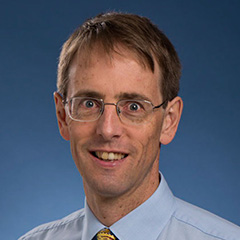
Symposium participant: Jong Woo Chung(Asan Medical Center, University of Ulsan College of Medicine, Korea)
Changing trends. Getting more accustomed to the TEES
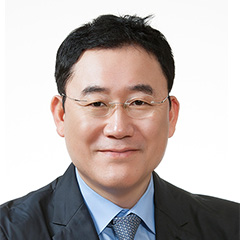
Paradigm is a widely accepted belief or concept. To achieve a paradigm shift, it should be changed the same way it was created, i.e. by repetition of information. Currently we are observing a paradigm shift that is revolutionizing the way medical care is provided in the field of otology. The challenge is what should we do when faced with such paradigm shift? Open our mind and tolerate changes, embrace new ideas and concepts, experience new instrumentations and technologies, and evaluate short and long terms outcome are the main-stays in such situation.
TEES have proved significant advantages over classic microscopic ear surgery. Using EES, surgeon can complete work exclusively via transcanal approach and avoid unnecessary dissection only for the sake of visualization, resulting in functional ear surgery and better control over the pathology. Progressive endoscopic technological and optical innovations have brought minimally invasive TEES to the forefront in the last decade. However, we are still in the process of anticipating future trends in ear surgery. With the increased development of technology, refinement of surgical techniques, and conduction of short and long-term prospective studies, EES will likely be incorporated into widespread practice in otology and a paradigm shift may occur in the near-future.
Thema Session 2
AUDITORY IMPLANTS
Pediatric, bilateral cochlear implant, bilateral perception, plasticity
Moderator/ Keynote: Blake C. Papsin(Hospital for Sick Children, Canada)
Neuroplasticity and Bilateral Cochlear Implantation
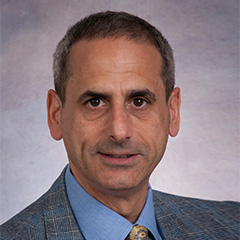
Chair/ Panelist: Yasushi Naito(Kobe City Medical Center General Hospital, Japan)
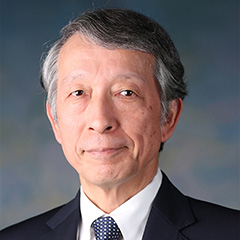
Panelist: Akinori Kashio(The University of Tokyo, Japan)
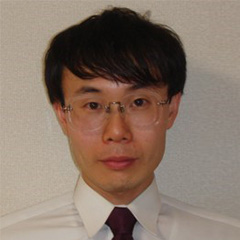
Panelist: Joachim Müller(University of Munich, Germany)
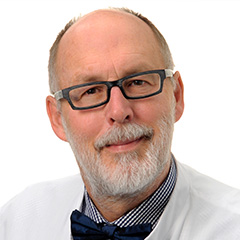
Panelist: Hidekane Yoshimura(Shinshu University, Japan)
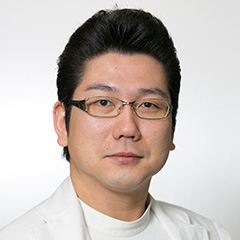
The intention of this session is that the attendees along with the panelists are given the material required to explore the documented benefits of bilateral cochlear implantation. Next we will strive to understand the factors which most greatly affect and predict outcome. To do this we will present material that allows the attendees to consider for example both the positive effect of bilateral implantation on language and socialization as well as the negative effects on balance and residual hearing. Importantly, the obstacles preventing early bilateral implantation will be debated and most importantly, thought and guidance offered regard when bilateral implantation is not indicated.
Thema Session 3
INNOVATIONS IN OTOLOGY
Role of AI, AR and Robot in otology
Moderator/ Keynote: George B. Wanna(New York Eye and Ear and Beth Israel of Mount Sinai, USA)
The Use of Mixed Reality and the Extracorporeal Video Microscope “Exoscope” in Otology and Skull Base Surgery
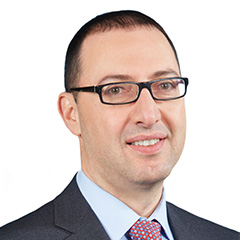
Chair/ Symposium participant: Nozomu Matsumoto(Kyushu University, Japan)
An augmented reality interface for transcanal endoscopic ear surgery
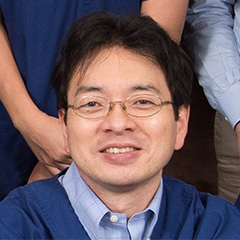
Symposium participant: Alejandro Rivas(Vanderbilt University Medical Center, USA)
Robots in Otologic Surgery
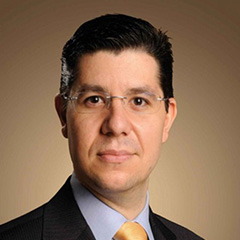
Symposium participant: Jae Ho Chung(Hanyang University, Korea)
Application of the Artificial intelligence in otology field
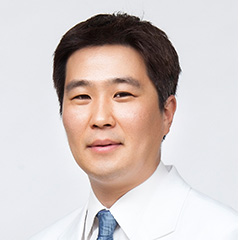
The use of mixed reality, artificial intelligence, robotic surgery and machine learning in the field of otology is in its infancy; in fact, most current initiatives are in the research stage. However, some major centers from around the world have begun to use these technologies which appear to be feasible and reliable in the proper setting. The benefits of employing these technologies shows great promise but a good deal of work still needs to be completed before it is proven to have a positive impact on outcome. Nonetheless, it will be challenging to implement these innovative techniques in most hospitals.
We are very excited about the theme of this session and look forward to the presentations of our esteemed speakers who are joining us from major Otolaryngology centers all over the world. It is our hope that these sessions will provide an opportunity to examine different innovations in Otology thereby generating lively and stimulating discussions as we consider areas of limitation, improvement and future directions.
Thema Session 4
EDUCATION
Learning tools for otologic surgery; YouTube, apps, artificial temporal-bone models
Moderator/ Keynote: Rudolf Probst(University Hospital Zürich, Switzerland)
Education in otologic surgery and the role of artificial temporal-bone models
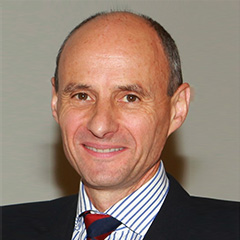
Chair/ Symposium participant: Yukio Katori(Tohoku University, Japan)
The situation of surgical training using donated cadavers in Japan
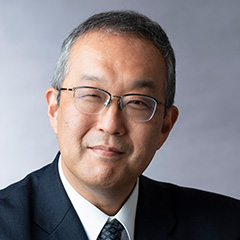
Symposium participant: Nirmal Patel(University of Sydney / Macquarie University, Australia)
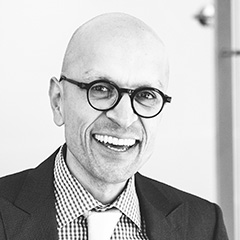
Symposium participant: Yoshihiko Hiraga (Keio University/Japanese Red Cross Shizuoka Hospital, Japan)
Temporal bone Educational Apps about 3D Layer Anatomy and CT/MRI imaging
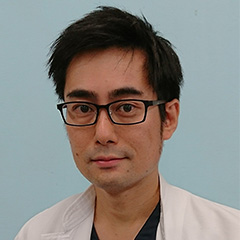
Learning and training of temporal bone (TB) surgery is both key for safe and effective otologic surgery and demanding because of the highly complex structure of the TB. Traditional means included mainly textbooks and dissection of cadaveric human temporal bones. Given the limitations of these traditional tools, today’s digital possibilities led to the creation of many new tools, including instructional videos available universally on YouTube, Apps dedicated to specific purposes such as combining anatomy and imaging, virtual reality dissections, or 3D-printing of TB models. This session intends to present, critically evaluate, and discuss a relevant selection of these many new teaching and learning tools.
Thema Session 5
INNOVATIONS IN OTOLOGY
Heads-up Surgery: Ergonomics in ear surgery
Moderator/ Keynote: Daniel J. Lee(Harvard Medical School, USA)
Surgeon safety: “Heads-up” endoscopic (EES) and exoscopic (ExES) approaches for ear and lateral skull base surgery
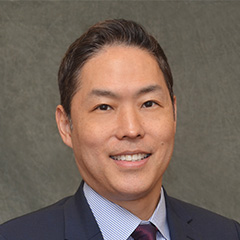
Chair: Kunio Mizutari(National Defense Medical College, Japan
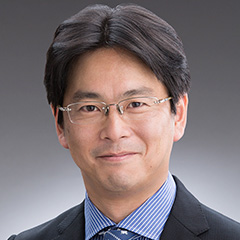
Symposium participant: Matthew Yung(Ipswich Hospital, United Kingdom)
The Effects of Prolonged Microscopic Work on the Neck and Back
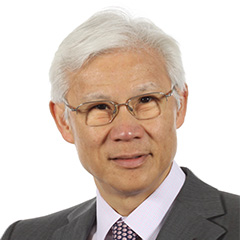
Symposium participant: Michael CF Tong(The Chinese University of Hong Kong, Hong Kong)
Endoscopic/ Microscopic Ear Surgery: One-hand or two-hands?
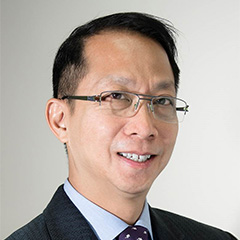
Cosponsored by KARL STORZ Endoscopy Japan K. K.
The introduction of the operating microscope in the early 20th century expanded our surgical reach into the temporal bone, providing both brilliant optics and two-handed dissection capabilities. Studies by Yung and others, however, suggest a high prevalence of chronic neck and back strain among microscopic surgeons, especially Otologists. We are now poised for significant disruption in our field with the growing adoption of “heads-up” surgical approaches that rely on endoscopes and exoscopes. Two-dimensional (2D) rigid endoscopes have wide-field high-resolution optics and are ideally suited for small-corridor approaches (endoscopic ear surgery or EES). Exoscopes (extracorporeal video microscopes) provide an expansive 3D view of the operative field without the bulkiness of traditional optics and are emerging as a viable alternative to the microscope or loupes for large-corridor surgical approaches (exoscopic ear surgery or ExES). A rapid increase in adoption of EES worldwide has been foundational to the introduction of exoscopes to otology and neurotology, with the first studies using ExES published in 2019. Potential advantages of ExES include superior ergonomics, compact size, and an equal visual experience for surgeons and observers. Limitations include low lighting in small surgical corridors and pixilation at high magnification. Exoscopes are viable alternatives to the microscope in otologic and neurotologic surgery and are complementary to endoscopic ear techniques.
Thema Session 6
SKULL BASE TUMORS
Treatment principles of vestibular schwannomas -Scientific evidence applied to the indivisual patients-
Moderator/keynote: Per Caye-Thomasen(Copenhagen University Hospital, Denmark)
Treatment principles in vestibular schwannomas - scientific evidence applied to the individual patient
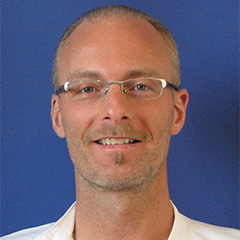
Chair: Hidemi Miyazaki(Miyazaki ORL Clinic/Tokyo Women's Medical University Medical Center East, Japan)
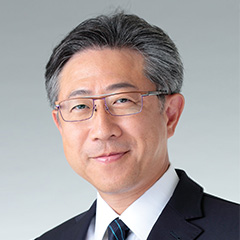
Symposium participant: Mohamed Badr-El-Dine(Faculty of Medicine, Alexandria University, Egypt)
Value of endoscope, used as an adjunct to the microscope, in improving surgical outcome of patients with vestibular schwannoma
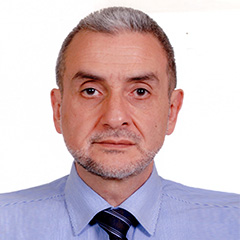
Symposium participant: Livio Presutti(University Hospital of Modena, Italy)
Treatment of vestibular schwannomas: endoscopic combined and exclusive approaches to the inner ear and cerebello-pontine angle
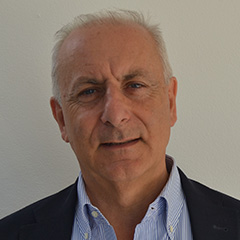
Symposium participant: Yang Sun Cho(Sungkyunkwan University School of Medicine, Samsung Medical Center, Korea)
Management of vestibular schwannoma in Samsung Seoul Hospital
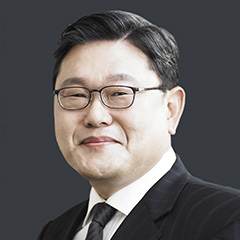
Symposium participant: Naoki Oishi(Keio University, Japan)
Role of hearing preservation surgery for small and medium-sized vestibular schwannomas: hearing-focused strategy
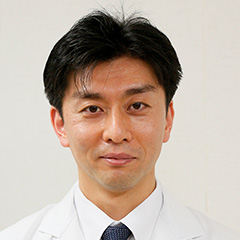
Symposium participant: In Seok Moon(Yonsei University College of Medicine, Korea)
New Research Concepts for Vestibular Schwanoma
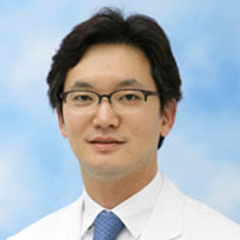
Surgical treatment of large vestibular schwannomas remains undisputed. However, data on the natural history of small and medium-sized vestibular schwannomas have shown that only one third of tumors grow after diagnosis, within 5 years of observation. Around 50% of the patients have good hearing at diagnosis and 60% will keep this during observation. Hearing preservation is even better in patients with normal discrimination at diagnosis, as 85% will keep their good hearing within 5 years and 70% within 10 years.
Results on tumor growth control by radiotherapy vary from 80 to 95%. However, a number of studies include patients without documented pre-therapy tumor growth. The quality of data for reported hearing preservation after radiotherapy is poor and results vary considerably, from 7 to 94%, on average 50-55%. Hearing preservation following surgery range from 20 to 85%, on average around 55%.
Thus, the overall conclusion is that active treatment, i.e. radiotherapy or surgery, should await documented tumor growth. However, a number of individual factors should be applied in the decision-making, e.g. age, co-morbidity, exact tumor size and mass effect, tumor localization within the IAC, hearing (pure tone and discrimination), vestibular system function, trigeminal nerve symptoms, etc.
In addition, new equipment and methods of continuous, near real-time cochlear nerve monitoring during hearing preservation surgery have improved results significantly and implementation of this novel system is likely to be the golden standard of future treatment.
Thema Session 7
INNER EAR/ MIDDLE EAR REGENERATION
From bench to bedside
Moderator/ Keynote: Joseph Santos-Sacchi(Yale University School of Medicine, USA)
Bedside tales from the bench: the dilemma of the basic scientist
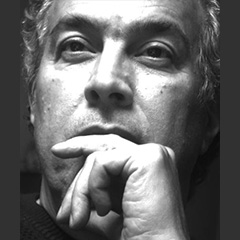
Chair/Symposium participant: Shin-ichi Kanemaru(Kitano Hospital/Translational Research Center for Medical Innovation, Japan)
Regeneration of the middle ear gas exchange function for treatment of the intractable otitis media
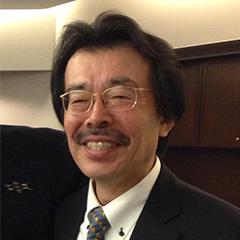
Symposium participant: Kazuo Oshima(Osaka University, Japan)
Hair Cell Regeneration and Stem Cells: Historical and Recent Advances
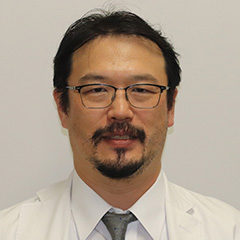
Symposium participant: Judith Kempfle(Massachusetts Eye and Ear Infirmary, Harvard Medical School, USA)
Regeneration of inner ear synapses with novel bone-binding neurotrophin analogues
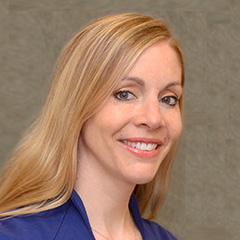
Symposium participant: Masato Fujioka(Keio University, Japan)
Regeneration of auditory hair cells as a therapeutic for sensorineural hearing loss
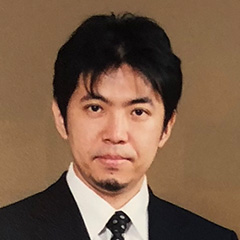
Symposium participant: Dong-Kee Kim(Daejeon St. Mary’s Hospital, College of Medicine, The Catholic University of Korea, Korea)
Nanoparticle-based intratympanic drug delivery for treatment of inner ear disease
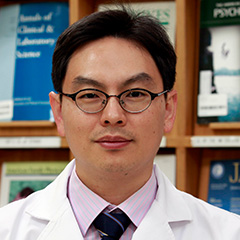
This session is an exciting one that focuses on regenerative approaches to circumvent the devastation of hearing loss. Following a basic scientist’s (Santos-Sacchi) perspective on translational research, several translational research groups will report on their efforts to influence recovery following cell death, or damage in the auditory periphery. For many years now, the otologist has hoped for methods to regenerate hair cells in the clinic. Much research has arisen. Dr. Oshima will provide an historical overview of this research, as well as touch on recent advances. Of course, any hair cell without neural connections is a physiologically useless cell. Dr. Kempfle will tell us about her exciting efforts to promote spiral ganglion neurite outgrowth and synapse formation on hair cells using novel modifications to traditional neurotrophic molecules. Next, Dr. Fujioka will detail his efforts to remove endogenous “regenerations inhibitors” and promote recovery from hair cell loss with small molecules. We are excited to hear about progress in current clinical trial using these molecules. Selective delivery of therapeutic molecules to inner ear tissues remains a challenge. Dr. Kim will tell us about advances in using nanoparticles to enhance uptake and persistence of drugs delivered by middle ear perfusion. Finally, it is important to get proper acoustical stimulation to all those regenerated hair cells and auditory neurons when they arrive! Hence, we need a well-functioning middle ear. Dr. Kanemaru will tell us about efforts to regenerate mastoid air cells to enable proper middle-ear pressure, and combat otitis media. All topics of this session are exciting because expectations are to make new ears from old ears with new cells, a worthy goal. Come and hear!
Thema Session 8
MIDDLE EAR SURGERY
Ossiculoplasty based on biomechanics
Moderator/ Keynote: Alexander Huber(University Hospital Zürich, Switzerland)
MIDDLE EAR SURGERY, Ossiculoplasty based on biomechanics
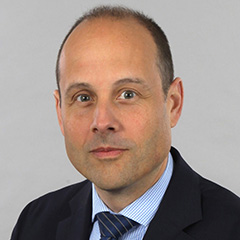
Chair: Naohito Hato(Ehime University, Japan)
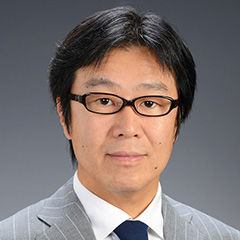
Symposium participant: Takuji Koike(Graduate School of Informatics and Engineering, The University of Electro-Communications Center for Neuroscience and Biomedical Engineering, Japan)
Ossiculoplasty based on measurement and simulation
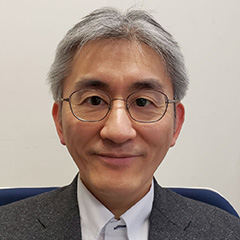
Symposium participant: Yutaka Yamamoto(Jikei University School of Medicine, Japan)
Current state of ossiculoplasty in Japan and clinical factors related to the hearing results
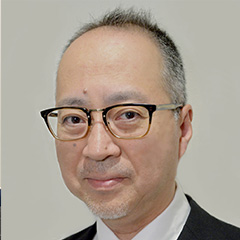
Symposium participant: Robert Vincent(Causse Ear Clinic, France)
Ossiculoplasty in Missing Malleus : The Malleus Replacement Prosthesis
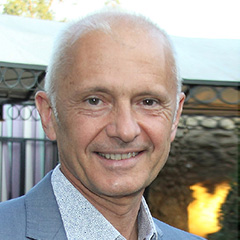
The session will be held as a symposium with experts in the field of ossiculoplasty and middle ear mechanics. The lectures will touch the basic principles of biomechanics of hearing and how this influences ossiculoplasty from a theoretical point of view. It will further include how vibrations and other properties of the middle ear may be objectivized intraoperatively and how mathematical modeling help to get a clearer view on how we may optimize our way of reconstructing the ear. The current status in hearing outcome in Japan is then reviewed. In particular, the influence of the eardrum, columella, prosthesis material and other factors will be explored and how theoretical considerations may be translated to the clinical setting by a malleus replacement in ossicular reconstruction. At the end, the panelists and the audience will be invited to give their view on specific and typical questions that arise during patient counselling and during the operation.
Thema Session 9
MIDDLE EAR SURGERY
Stapes surgery for otosclerosis: scientific background and clinical results
Moderator/Keynote: Robert Vincent(Causse Ear Clinic, France)
Complications in Stapes Surgery – Techniques and Results
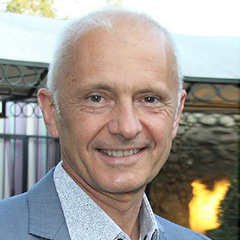
Chair/Panelist: Hiromi Kojima(Jikei University School of Medicine, Japan)
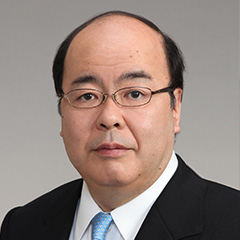
Panelist: Sune Land Bloch(Copenhagen University Hospital, Denmark)
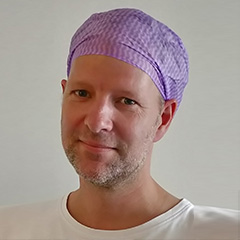
Panelist: Alexander Huber(University Hospital Zürich, Switzerland)
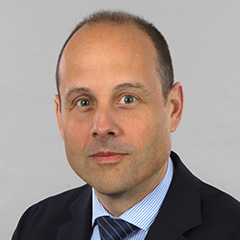
Panelist: Brandon Isaacson(UT Southwestern Medical Center, USA)
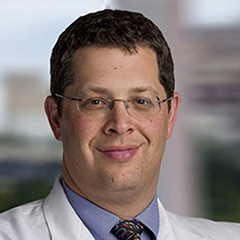
Panelist: Joachim Müller(University of Munich, Germany)

Primary stapes surgery is usually associated with excellent postoperative hearing outcomes specially in case of otosclerostic stapes fixation. However some complications could be encountered during surgery such as obliterative otosclerosis, overhanging and dehiscent VIIth nerve, simultaneous epitympanic malleus head ankylosis, perilymphatic gusher, persistent stapedial artery and middle ear malformations etc.. The author will present his technique for surgical management of these difficult situations using HD surgical videos. Postoperative hearing results in a personal series of more than 6000 cases will also be presented. Following the keynote lecture, a panel will discuss challenging cases where the appropriate treatment is open to debate.
Thema Session 10
AUDITORY IMPLANTS
Challenges in cochlear implant (expanding indications, hearing preservation)
Moderator/ Keynote: Shin-ichi Usami(Shinshu University, Japan)
Factors Affecting Hearing Preservation
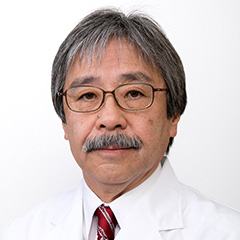
Chair: Alejandro Rivas(Vanderbilt University Medical Center, USA)
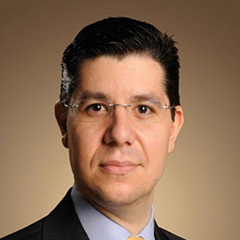
Symposium participant: George B. Wanna(New York Eye and Ear and Beth Israel of Mount Sinai, USA)
Predictive Factors for short and long term hearing preservation in cochlear implantation
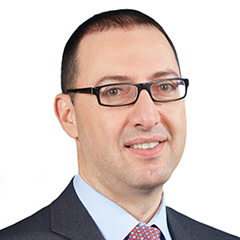
Symposium participant: Alexander Huber(University Hospital Zürich, Switzerland)
ECoG – A monitor for hearing preservation?
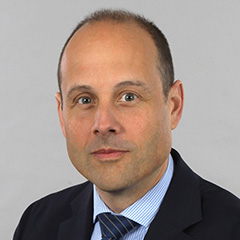
Symposium participant: Masahiro Takahashi(International University of Health and Welfare, Mita Hospital, Japan)
Cochlear volume as a predictive factor for hearing preservation after EAS surgery
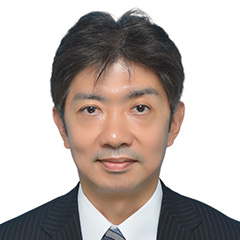
Symposium participant: Blake C. Papsin(Hospital for Sick Children, Canada)
Analysis of the Etiology and Indications for Cochlear Implantation in Children with Single-Sided Deafness
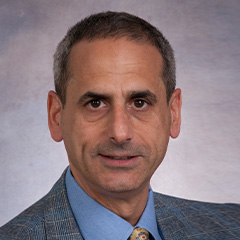
Thema Session 11
SUPERIOR SEMICIRCULAR CANAL DEHISCENCE SYNDROME
New treatment modality/Insights into cochlear mechanics and physiology
Moderator/ Keynote: Stephen P. Cass(University of Colorado, USA)
Transmastoid Repair of Superior Semicircular Canal Dehiscence
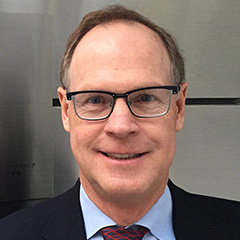
Chair: Hiroshi Yamashita (Yamaguchi University, Japan)
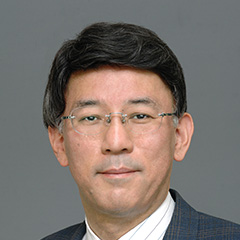
Symposium participant: Daniel J. Lee(Harvard Medical School, USA)
Middle fossa craniotomy approach for repair of superior canal dehiscence following failed round window surgery
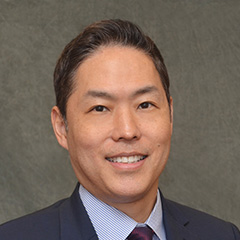
Symposium participant: Daisuke Yamauchi(Tohoku University, Japan)
The technique and benefits of plugging by using underwater endoscopic ear surgery for superior semicircular canal syndrome
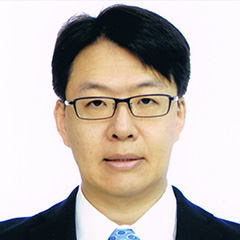
Special commentator: Joseph Santos-Sacchi(Yale University School of Medicine, USA)
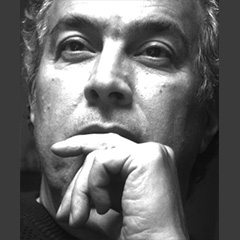
In this session we will review of the 3rd window theory for superior semicircular canal dehiscence in the context of cochlear mechanics and physiology. Advances in diagnosis and treatment of SSCD will be presented with an emphasis on CT classification and new diagnostic approaches. Surgical techniques for SSCD repair including the middle fossa approach, and novel surgical repair techniques including transmastoid and endoscopic approaches will be presented. Informative cases will be discussed by the presenters in a panel format to provide state of the art tips and pearls for managing patients with this interesting disorder.
Thema Session 12
MIDDLE EAR SURGERY
Classification of cholesteatoma and surgical strategies
Moderator/ Keynote: Matthew Yung(Ipswich Hospital, United Kingdom)
From endoscopic ear surgery to mastoid obliteration in cholesteatoma surgery: the Ipswich strategies
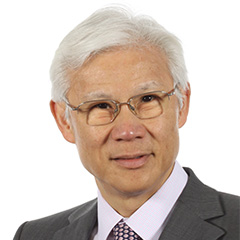
Chair/ Symposium participant: Tetsuya Tono(University of Miyazaki, Japan)
Introduction to the EAONO/JOS staging system for middle ear cholesteatoma and the IOOG categorization for tympanomastoid surgery
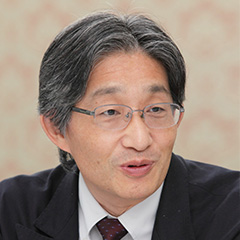
Symposium participant: Manabu Komori(Jikei University Daisan Hospital, Japan)
Results from the Japan Otological Society registry data set
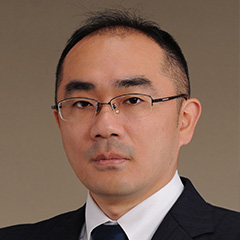
Symposium participant: Adrian James(University of Toronto, Canada)
International collaboration validates EAONO/JOS cholesteatoma classification
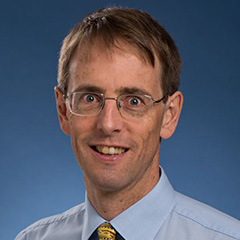
Symposium participant: Yu Matsumoto(The University of Tokyo, Japan)
Simple Data Entry for the IOOG SAMEO-ATO Framework and the EAONO/JOS System
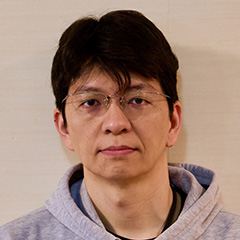
The EAONO/JOS consensus based Classification and Staging of Middle Ear Cholesteatoma was created at the 2016 International Cholesteatoma Conference. This is a modification of the original JOS system. Since then, the EAONO/JOS system has gained international acceptance and popularity. Based on this success, the International Otology Outcome Group was formed in 2018 to facilitate international collaboration of auditing surgical outcome using a common otology dataset (www.ioog.net).
In this session, Prof Tetsuya Tono from Miyazaki will start by giving a brief introduction to EAONO/JOS system and IOOG framework. Dr. Matthew Yung from United Kingdom will then give his keynote lecture on how the EAONO/JOS system has help him to formulate his surgical strategy on cholesteatoma.
Dr. Manabu Komori from Tokyo will present the results from the JOS registry data set that was done previously to show the benefit of multi-centre collaboration amongst a number of Japanese otology centres. Prof Adrian James from Canada will then present the very recent work of an international collaboration from centres in US, Canada, UK and Japan on validation of the EAONO/JOS staging system. Finally, Dr. Yu Matsumoto will introduce the automated data entry of the EAONO/JOS system and IOOG framework that he has created in order to facilitate easy data entry.
Each speaker in this session has been asked to keep the presentation short so that sufficient time is allowed for discussion with the audience.
Thema Session 13
AUDITORY IMPLANTS
Middle ear implant and auditory brainstem implant
Moderator/ Keynote: Joachim Müller(University of Munich, Germany)
AUDITORY IMPLANTS―Middle ear implant―

Chair/ Panelist: Katsumi Doi(Kindai University, Japan)
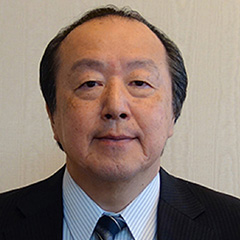
Panelist: Satoshi Iwasaki(International University of Health and Welfare, Mita Hospital, Japan)
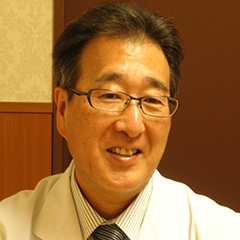
Panelist:Kristianna Mey(Copenhagen University Hospital, Denmark)
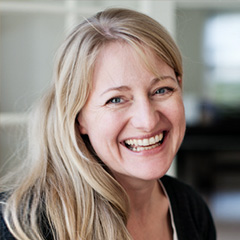
Commentator: Daniel J. Lee(Harvard Medical School, USA)
Micro-structured thin-film technology for the development of conformal auditory brainstem implant (ABI) electrode arrays
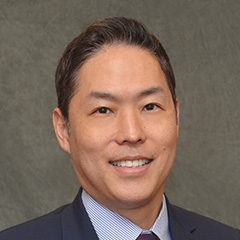
Active middle ear implants are surgically implanted prosthesis, which are intended to directly stimulate the ossicular chain or the inner ear fluids through the oval or round windows. These implants may be useful for the treatment of patients with sensorineural hearing loss as well as for conductive or mixed hearing loss. This Round Table attempts to summarise the current knowledge concerning the basic characteristics and indications of the most commonly used middle ear implants.
Combined hearing loss is an essential indication for implantable hearing devices. Depending on the bone conduction threshold, various options to couple active middle ear implants to vibratory structures of the middle ear are available. Surgical details of coupling are discussed as well as proper selection criteria.
Patients with mild sensorineural deafness usually benefit from transcutaneous bone conduction implants (BCI), while percutaneous BCI systems are recommended also for moderate hearing loss. For combined hearing losses with moderate and high-grade cochlear hearing loss, active middle ear implants are recommended. For patients with incompatibilities or middle ear surgery, these implants are a valuable and proven addition to the therapeutic options.
Thema Session 14
MENIER DISEASE
MRI for hydrops/Treatment modality
Moderator: Brandon Isaacson(UT Southwestern Medical Center, USA)
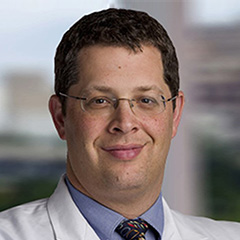
Chair/ Symposium participant: Tadashi Kitahara(Nara Medical University, Japan)
Changes in vertigo frequency and endolymphatic volumes after endolymphatic sac surgery
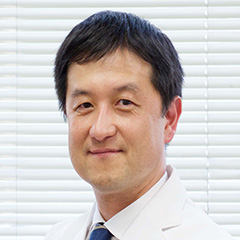
Keynote / Symposium participant: Michihiko Sone(Nagoya University, Japan)
Evaluation of endolymphatic hydrops on MRI
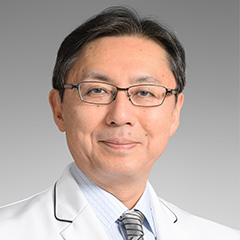
Symposium participant: Rudolf Probst(University Hospital Zürich, Switzerland)
Is it time to change the taxonomy of Ménière’s Disease?
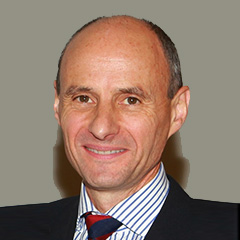
Symposium participant: Søren Hansen(ENT clinic Frederiksberg/Copenhagen University Hospital, Denmark)
Surgery in Menieres disease: Retrolabyrinthine vestibular neurectomy and endolymphatic duct clipping
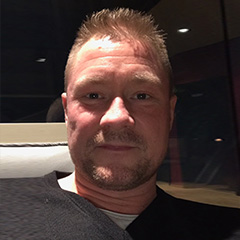
Special commentator: Joseph Santos-Sacchi(Yale University School of Medicine, USA)

Meniere’s disease is an idiopathic disorder or the membranous labyrinth that presents with episodic vertigo, fluctuating hearing, tinnitus, and ear fullness. Endolymphatic hydrops is the pathologic correlate for Meniere’s disease and up until recently could only be definitively diagnosed on post-mortem histopathological examination of the temporal bone. High resolution magnetic resonance imaging of the membranous labyrinth is now a well-established technique for confirming the presence of endolymphatic hydrops and to evaluate efficacy of treatment. This symposium will review the following topics in addition to discussion on MRI imaging and management of Meniere:
1) Michihiko Sone, MD, PhD – Significance of endolymphatic hydrops on MRI
2) Rudolf Probst, MD – Is it time to change the taxonomy of Meniere’s Disease?
3) Tadashi Kitahara, MD, PhD – Changes in vertigo frequency and endolymphatic volumes after endolymphatic sac surgery
4) Søren Hansen – Retrolabyrinthine vestibular neurectomy and Endolymphatic Duct Clipping
